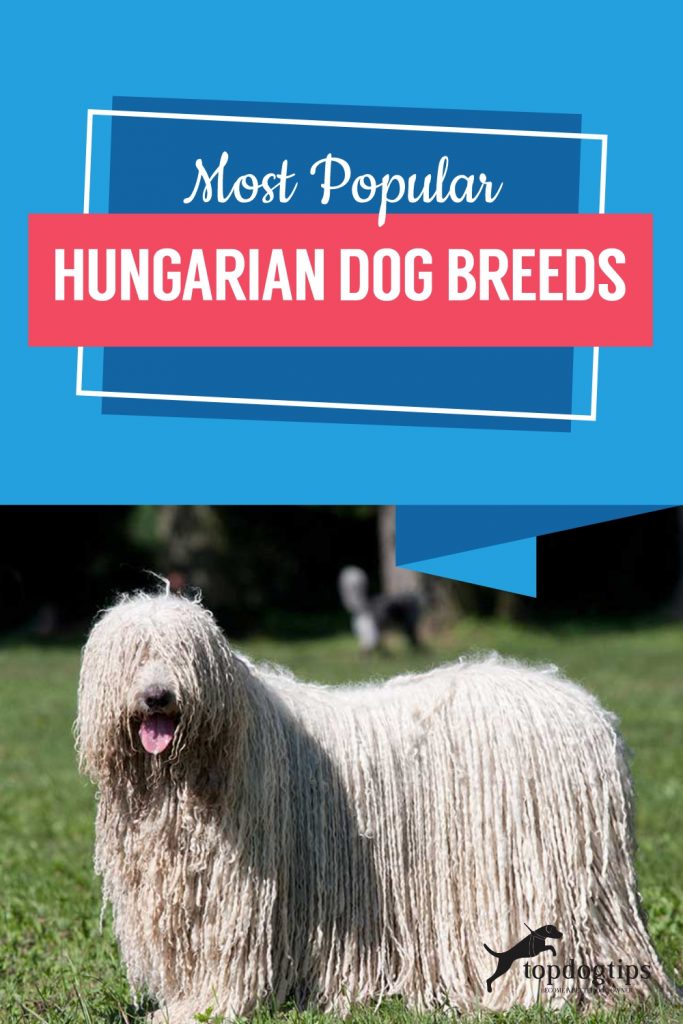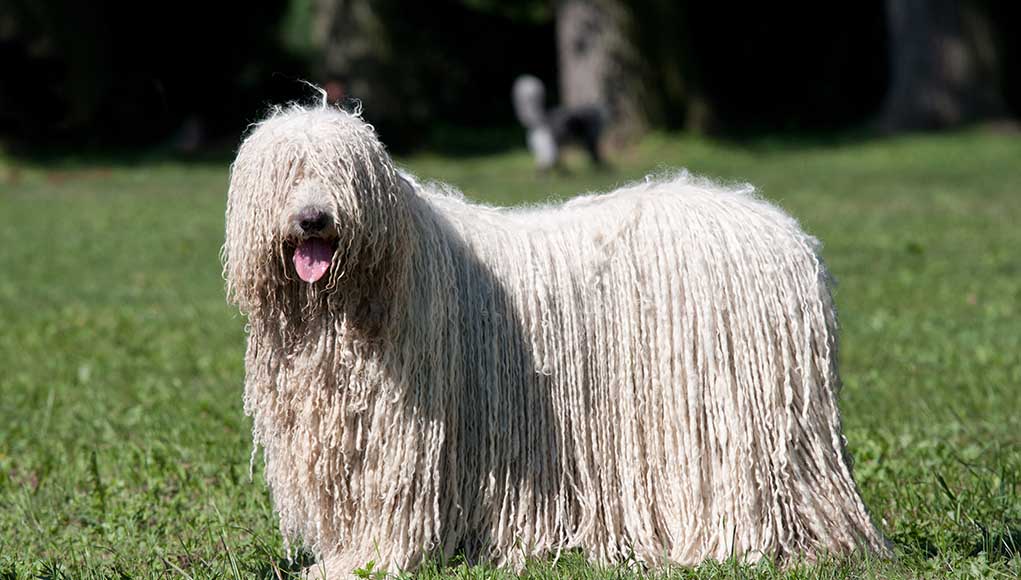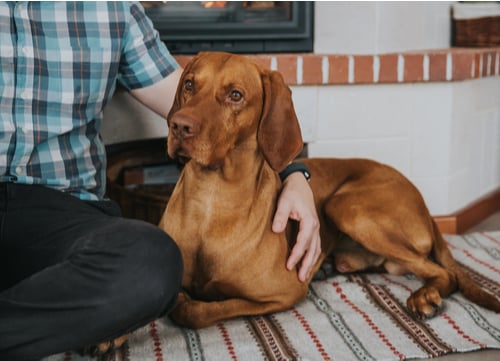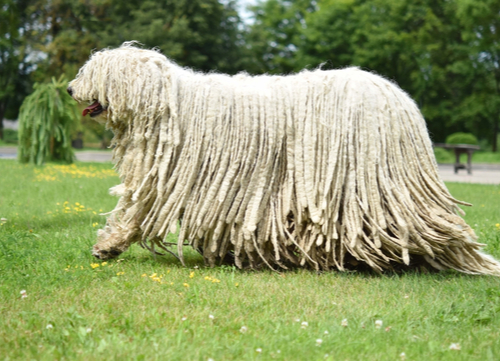Hungarian dog breeds are smart and love-able creatures. There are only nine Hungarian dog breeds. Here you will find detailed information about the four most popular Hungarian dog breeds.
This breed has a long and interesting history. Many years ago, the natives of Hungary had a preference for hardworking dogs that were good with people, and they were bred as such.
You will often hear them described as ‘high-performance’ work dogs because they are renowned for their strong work ethic. To learn more about these rare and precious breeds, keep reading.
Vizsla
This purebred Hungarian dog breed was developed as a retriever and a pointer. The Vizsla is also referred to as the Hungarian Pointer.
Their Hungarian roots are more than 1000 years old. The canines were used by warlords and nobles to hunt hares and game birds.
Behavior and Temperament
Known as the “Velcro Vizsla,” this breed is super clingy. As mentioned, the Vizsla was bred as a retriever and a pointer, they worked side by side with their hunters and were rarely separated from them.
It appears that this trait has been seared into their DNA as they have a habit of leaning against the legs of their owners and following them everywhere they go.
Vizslas are a hardworking and versatile breed. This Hungarian dog breed is in its element when they have a job to do.
They are a high-energy breed and need plenty of daily exercises, at least an hour a day. The Vizsla loves to compete in dog sporting activities.
Vizslas make excellent watchdogs because they are fast learners and they have strong protective instincts.
Vizslas are extremely friendly and get on well with other dogs, and cats when raised with them.
Although, they are not good with other pets such as birds, guinea pigs, gerbils, and rabbits, because of their hunting instincts.
This breed enjoys chewing things. To avoid damaging your furniture, get them plenty of chew toys to keep them occupied.
It is essential that you control their barking early or your canine will become a recreational barker.
The Vizsla seems to have an opinion about everything that’s going on around them and will bark excessively to let you know. The Vizsla is prone to separation anxiety and this can manifest into destructive behavior.
If you prefer to keep their dogs outside this breed may not be for you. Vizsla, because their coats are not cut out for cold weather because it won't protect them.
This Hungarian dog breed thrives with human companionship, without it, they get depressed. In homes with young children they are affectionate, but the high energy levels can become a problem for younger children.
They do make excellent companions for energetic older children. In the right family, they are loving, lively, gentle, and friendly.
Grooming
The Vizsla has a short, smooth coat that is easy to brush; giving their fur the once over with a rubber brush and a damp cloth each week will do the trick.
You will know when your canine’s nails have become too long when hear them clicking on the floor. Trim them once or twice a month to keep them in good condition. Brushing their teeth daily, as with all dogs, is recommended.
Additional Information
- Lifespan: 10 – 14 years
- Colors: Golden, red golden, golden rust
- Weight: 50 – 65 lbs
- Height: 21 – 24 inches
- Hypoallergenic: No
Fun Fact: Vizslas are highly intelligent dogs, one of the reasons they are bred as hunting companions.
They are avid problem solvers and are always looking to do something that will engage their brains.
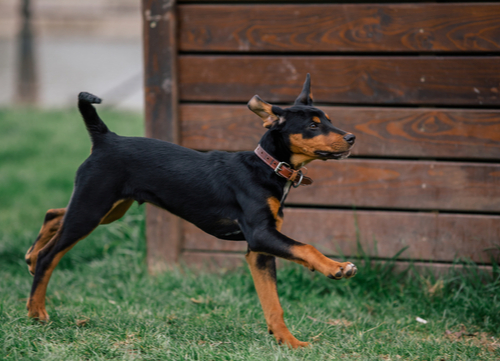
Transylvanian Hound
The Transylvanian Hound is also referred to as the Transylvanian Scent Hound and the Hungarian Hound. This Hungarian dog breed is an ancient breed that was a favorite amongst hunters and royalty.
In the early 20th century, they almost became extinct. They managed to survive, and today they are the loyal and faithful companions of many dog lovers.
Although the Transylvanian Hound is a well-loved and one of the most popular Hungarian dog breeds, it might not be the best option for families with young children or first-time pet owners.
Behavior and Temperament
The Transylvanian Hound is known for its winning personality. They have worked with humans for centuries, understanding us in ways that other dogs don’t.
This breed is accustomed to a variety of terrains and climates and is capable of adapting to any environment. They were bred to hunt and travel and have massive amounts of energy and require a lot of exercises.
You will need to walk your dog often and schedule additional playtime in-between. The Transylvanian Hound is used to close companionship with humans and will do everything in their power to please and protect their owners.
They are known to enjoy snuggling up on the sofa with whoever is available.
The Transylvanian Hound needs proper training, if not they can get aggressive and overprotective and may snap at anyone they feel encroaching on their territory.
If you are a first-time pet owner, this breed may not be ideal for you. They need experienced training, so you may need to invest in a dog trainer.
Due to their size and high energy levels, be cautious with them around small children. Their intention would not be to hurt the child, but with high energy, jumping and scurrying about accidents can happen.
Grooming
You won’t need to spend much time grooming the Transylvanian hound. They have a very short coat requiring minimal care.
Brushing the fur once a week with a grooming mitt or a strong bristle brush will keep your dog’s coat in good health. Because of their long ears, check their ears for pests and debris daily and clean them according to your vet’s recommendations.
As with all dogs, maintain good dental hygiene by brushing their teeth daily. Trim nails when required and give them a good bath at least once a month.
Additional Information
- Lifespan: 10 – 14 years
- Colors: Black, tan
- Weight: Minimum 55 lbs
- Height: 22 – 26 inches
- Hypoallergenic: No
Fun Fact: In 2006, the United Kennel Club officially recognized the Transylvanian Hound as a part of the scent hound group.
Hungarian Greyhound
History suggests that the Hungarian Greyhound breed was not only used for hunting dogs but it as a loyal family pet also. They have a long history.
Fossils have been found in the Carpathian Mountain range which proves they have been around for hundreds of years. Due to their sleek and elegant look, they are one of the most popular Hungarian dog breeds.
This breed is common amongst the aristocracy of Hungary. They are exceptionally fast with limitless stamina; they were typically used to hunt hare and deer, because of their speed, hunters would follow behind them on horseback to keep up.
Behavior and Temperament
Despite their fierce ability to hunt, the Hungarian Greyhound is a timid and docile breed. They love being around other dogs and children; however, they can get a bit nervous when around over-excited kids.
They make great guard dogs once they have bonded with a family. Although Hungarian Greyhounds are standoffish around strangers, this does not manifest in aggressive behavior.
It is important that you socialize your pet early and continuously or it can become shy and afraid to perform tasks that it perceives as difficult.
The Hungarian Greyhound needs space to play games and stretch out its long body. Therefore, if you live in a small space, this may not be the breed for you.
They are high-energy dogs and need to exercise for a minimum of 1 hour per day. Additionally, because they are intelligent dogs, they will need interactive toys to keep them engaged and out of trouble.
Grooming
When it comes to grooming, the Hungarian Greyhound is easy to maintain. Their fur is short and soft, it requires brushing at least once a week with a natural bristle brush, a hound mitt, or a slicker brush.
After brushing, wiping the coat down with a damp cloth will keep the coat looking shiny as well as remove any dead hair. They shed during the spring and summer months, during which time they will need additional brushing.
Unlike most dogs, the Hungarian Greyhound doesn’t need bathing often. Bathing them two to three times a year is enough.
During your weekly grooming sessions, check the pads of their feet for soreness or cracks, clean the ears if required, and cut the nails when necessary.
Additional Information
- Lifespan: 12 – 14 years
- Colors: Black, red, fawn, brindle
- Weight: 49 – 68 lbs
- Height: 24 -27.5 inches
- Hypoallergenic: No
Fun Fact: Hungarian Greyhounds are also known as Magyar Agar.
Komondor
If you didn’t know better, you’d think the Komondor was created to mop floors. Its unique look is one of the main reasons it is amongst the most popular Hungarian dog breeds. But this well-loved Hungarian breed was developed as a flock guardian dog.
They are experts in this area and are highly protective, independent, and intelligent.
Behavior and Temperament
Due to their protective instincts, the Komondor is known to sit and stare at their owners as they perform their duties around the home.
They are very suspicious of strangers and will attack if they perceive someone as a threat. If you are a first-time dog owner or a pushover, this is not the breed for you. The Komondor needs a firm hand or they will quickly lose respect for you.
You will need to socialize your dog early and often by exposing him to different situations, people, and environments.
If not, they won’t know how to behave when they are outside their comfort zone. Give your dogs and guests a special introduction and ensure he becomes familiar with them, to avoid any problems.
Komondors don’t like dogs they don’t know and will go into attack mode when they come across one. It is also important to mention that some Komondors will point-blank and refuse to share their space with another dog.
So, in some cases, it might not be possible to have another canine in the home. Nevertheless, they do seem to love cats and other animals.
Grooming
You will need to invest a lot of time grooming the Komondor. Due to the type of fur they have, you won’t need to brush it, but you will need to make sure it is kept free from dirt and parasites.
Experts advise that you give them a bath 3 to 4 times per year; anything more than this will remove the natural layer of fat on the hair which will cause it to attract more dirt.
If the dog is out in the rain and gets damp, dry the coat as soon as possible to avoid a mildew-type smell.
Additional Information
- Lifespan: 10 – 12 years
- Colors: White
- Weight: 80 – 100 lbs
- Height: 25.5 – 27.5 inches
- Hypoallergenic: No
Fun Fact: With only 13 of this Hungarian Dog Breed in Australia, the Komondor is one of the rarest dog breeds in that country.
Popular Hungarian Dog Breeds Final Thought
We believe that the extraordinary bond between people and their canines enables them to live happier and richer lives.
Despite the fact that owning a dog is extremely rewarding, it is also a big responsibility. It is essential that you choose the breed that is right for you.
As you have read, the most popular Hungarian dog breeds come in all shapes, sizes, and temperaments.
Before you make a commitment, be sure to do your research and become educated on what it takes to take care of this particular breed.
READ NEXT: Most Popular Irish Dog Breeds
